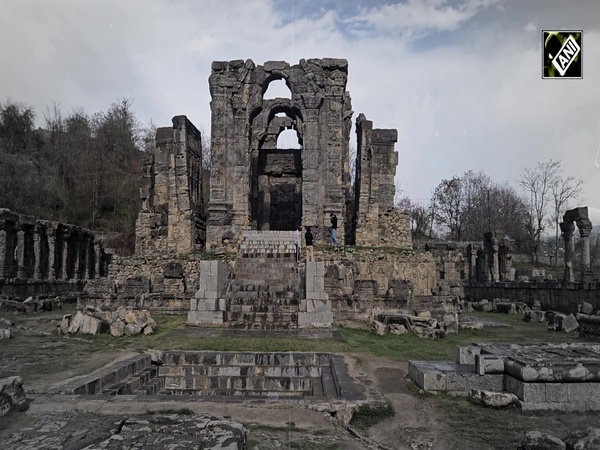Researchers find a tyrannosaur's last meal perfectly preserved inside its stomach cavity
Dec 10, 2023

Washington, DC [US], December 10 : Researchers have found a tyrannosaur's last meal perfectly preserved inside its stomach cavity, as per CNN.
According to a new research on the fossil published on Friday in the journal Science Advances, the hind legs of two baby dinosaurs were found inside the tyrannosaur's stomach cavity.
This is the first time the stomach contents of a tyrannosaur have been uncovered.
A palaeontologist and associate professor at the University of Calgary in Alberta, Darla Zelenitsky said the revelation makes this discovery particularly exciting.
Zelenitsky said: "Tyrannosaurs are these large predatory species that roamed Alberta, and North America during the late Cretaceous. These were the iconic apex or top predators that we've all seen in movies, books and museums. They walked on two legs (and) had very short arms."
"It was a cousin of T. rex, which came later in time, 68 to 66 million years ago. T. rex is the biggest of the tyrannosaurs, Gorgosaurus was a little bit smaller, maybe full grown would have been 9, 10 meters (33 feet)," she said, as per CNN.
The tyrannosaur, a young Gorgosaurus libratus, would have weighed about 772 pounds (350 kilograms) -- less than a horse -- and reached 13 feet (4 meters) in length at the time of death.
The creature was between the ages of five and seven and appeared to be picky in what it consumed, Zelenitsky said.
"Its last and second-to-last meal were these little birdlike dinosaurs, Citipes, and the tyrannosaur actually only ate the hind limbs of each of these prey items. There's really no other skeletal remains of these predators within the stomach cavity. It's just the hind legs.
"It must have killed ... both of these Citipes at different times and then ripped off the hind legs and eaten those and left the rest of the carcasses," she added. "Obviously, this teenager had an appetite for drumsticks."
The two baby dinosaurs both belonged to the species called Citipes elegans and would have been younger than 1-year-old when the tyrannosaur hunted them down, the research said, as per CNN.
The almost complete skeleton was found in Alberta's Dinosaur Provincial Park in 2009.
It wasn't immediately obvious that the tyrannosaur's stomach contents were preserved but staff at the Royal Tyrrell Museum in Drumheller, Alberta, noticed small protruding bones when preparing the fossil in the lab and removed a rock within its rib cage to take a closer look.
"Lo and behold, the complete hind legs of two baby dinosaurs, both under a year old, were present in its stomach," said co-lead author Francois Therrien, the museum's curator of dinosaur paleoecology, in a statement, according to CNN.
The palaeontologists were able to determine the ages of both the predator and its prey by analyzing thin slices sampled from the fossilized bones.
Zelenitsky said: "There are growth marks like the rings of a tree. And we can essentially tell how old a dinosaur is from looking at those, the structure of the bone."



















